2019 Kyabra chickpea on self-mulching clay – Monto
Grower: Matthew Pattie
Locality of crop: Monto
Farming system: 100% dryland cropping. Growing sorghum, chickpea, mungbean, wheat and oats. Have had success with mungbeans following a winter cereal, and chickpea after a long fallow in the last 6–7 years. This year is the first trial of double cropping chickpea after sorghum. Double cropping with pulses have been ‘business-saving’ for the Pattie family after moving out of pig production in 2007.
Monitored area: 30 ha of chickpeas sown on brigalow belah self-mulching soils
Pre-plant actions:
- Sorghum harvested 24/3/19.
- Soil moisture profile filled with 173 mm rain falling between early March and the end of April.
- One fallow spray to kill ratoon sorghum and the few weeds present 2 weeks prior to planting.
Planting:
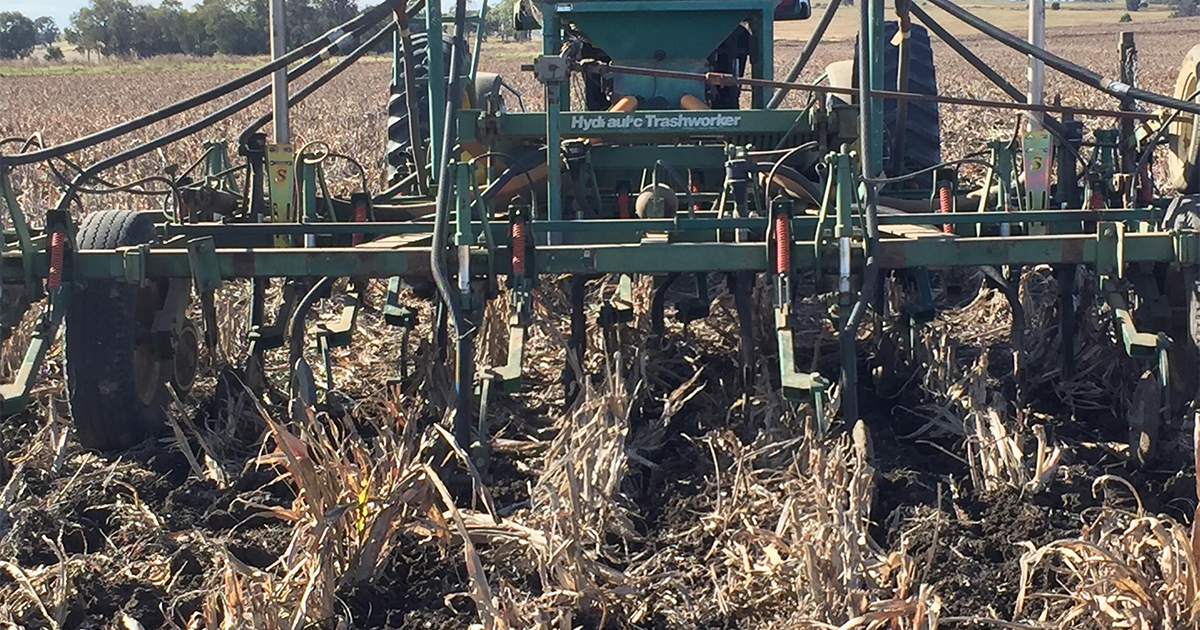 Chickpeas sown between rows of standing sorghum stubble.
Chickpeas sown between rows of standing sorghum stubble.
- Kyabra variety chickpea sown into standing sorghum stubble on 4 June. The Patties like this variety because it has good plant height for harvest and yields well historically.
- Crop was sown using a tyne opener. Crop planted 30” apart between old sorghum rows on a 6 m CTF system to reduce compaction and increase efficiency.
- Sown at 50 kg/ha, 100 mm deep into good moisture, 5 weeks after the last rainfall event.
- Inoculant was applied as a peat slurry to seed through the auger when loading the seeder.
- No other seed treatments or fertiliser was applied.
- Pre-emergent chemical applied after planting to ensure broadleaf weeds are kept out of crop.
- Chickpeas fully emerged 10 days after planting
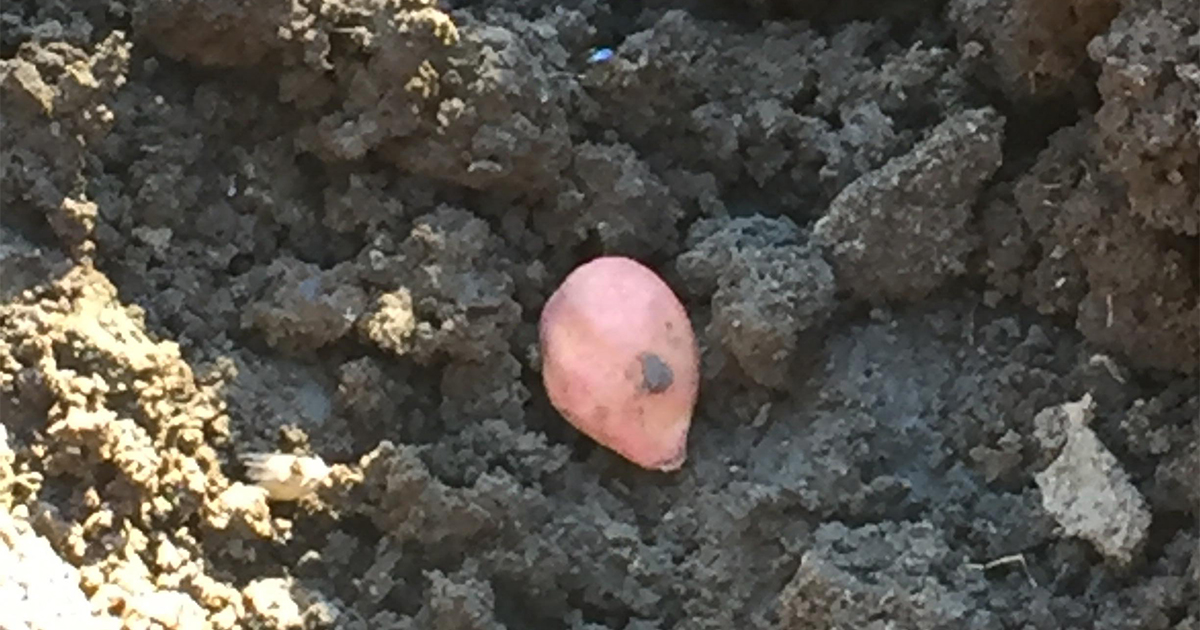 Chickpea seed sown into good soil moisture at 100 mm depth, 5 weeks after last rain.
Chickpea seed sown into good soil moisture at 100 mm depth, 5 weeks after last rain.
Week 4
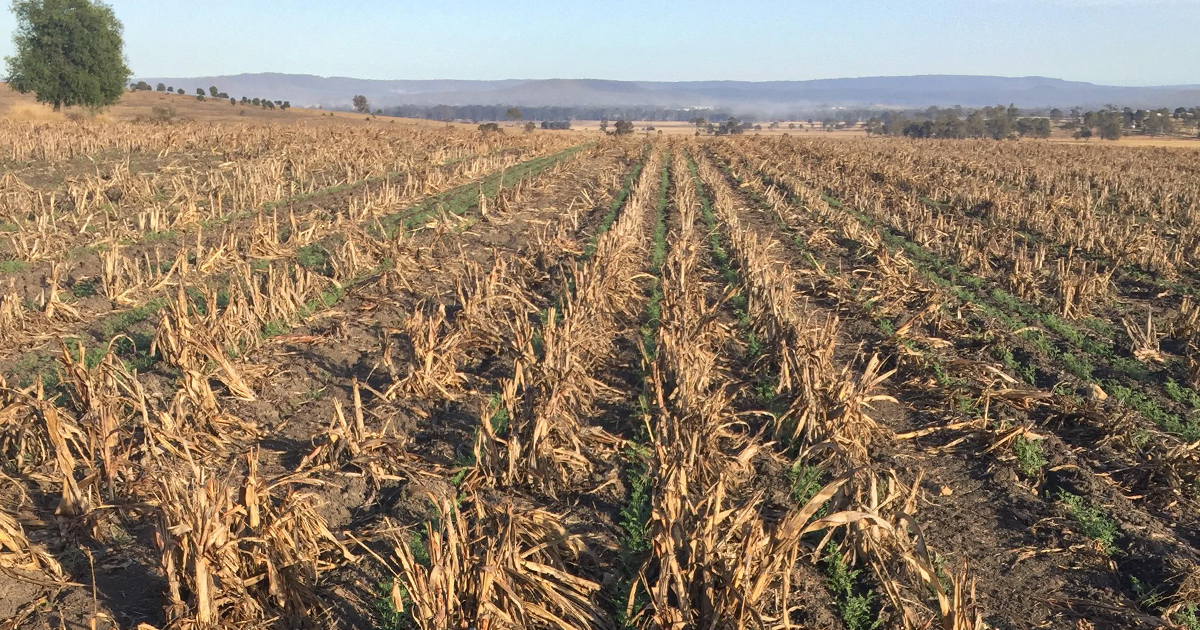
Management notes:
- Crop emergence has been good. One crop row affected by damaged air seeder line wont effect crop yield.
- There has been no significant rainfall since April 25, only small falls of less than 5 mm.
- Crop looks thrifty and is progressing well.
- There are no weeds in crop at all and no insect issues.
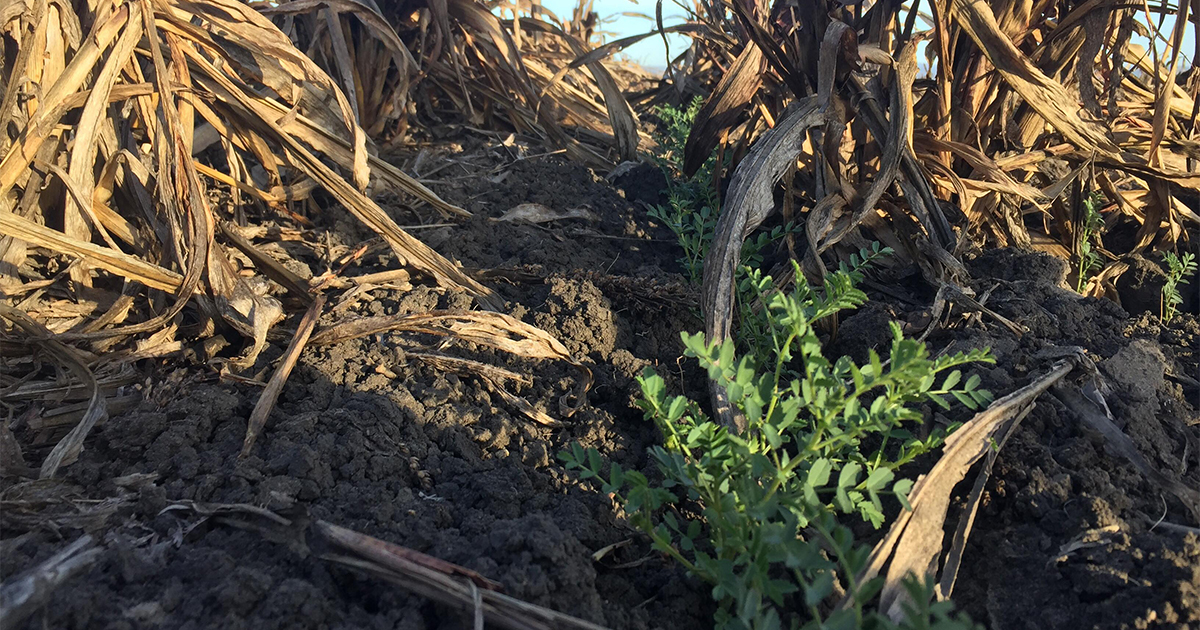 Chickpea growing well on stored soil moisture.
Chickpea growing well on stored soil moisture.
Week 5
Management notes:
- Just 2 mm of rain fell in the last week.
- Crop unchanged – no weeds have emerged and crop not under any threat of insect or other pests.
Week 6
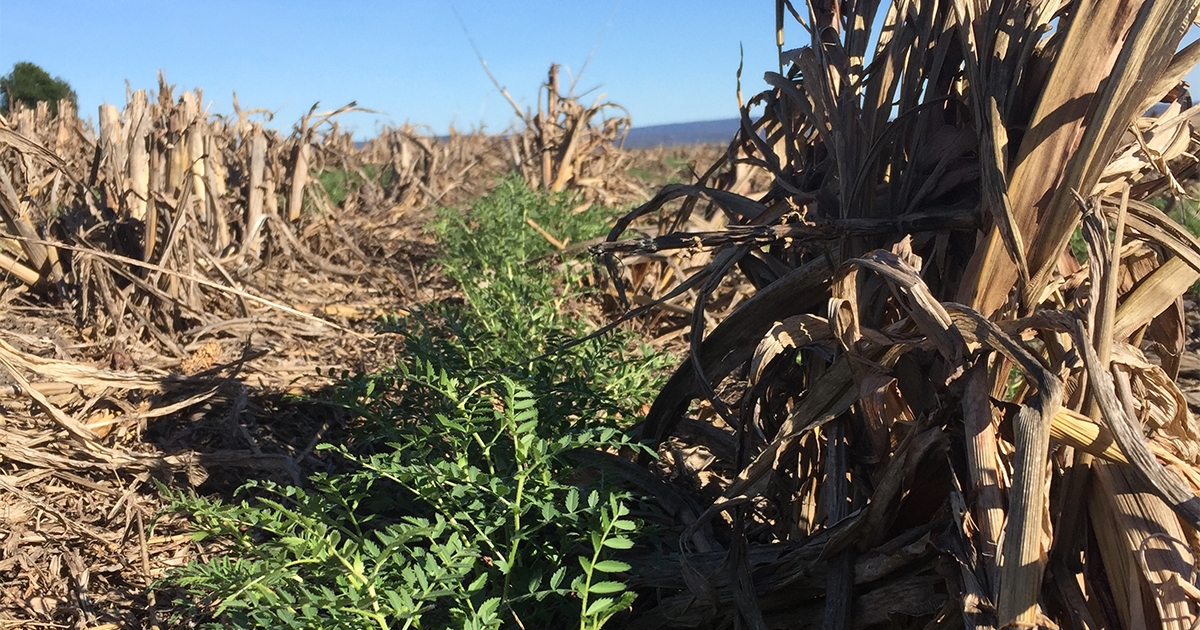
Management notes:
- No effective rain now since April 25.
- Frosty mornings with cool sunny days this week.
- No weed or insect pressure.
- Crop is doing well on good subsoil moisture.
Week 7
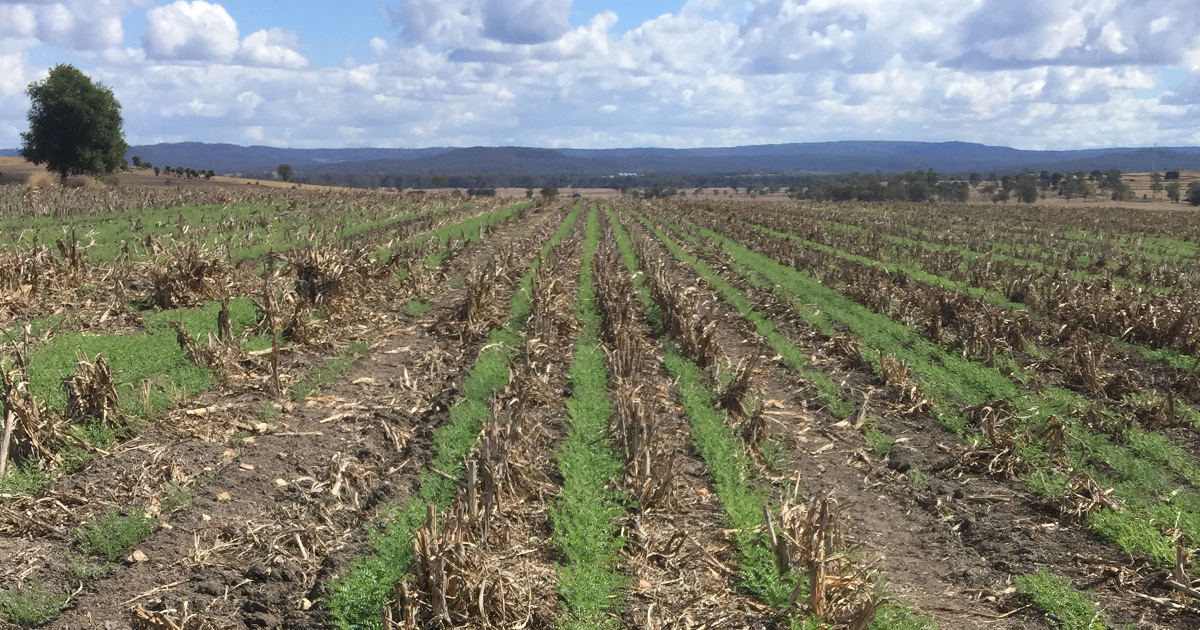
Management notes:
- Crop advancing well, but still no rain since April 25.
- No weed or pest issues.
- In the past week, six mornings out of seven there has been frost followed by warm days, with early 20 degree temperatures.
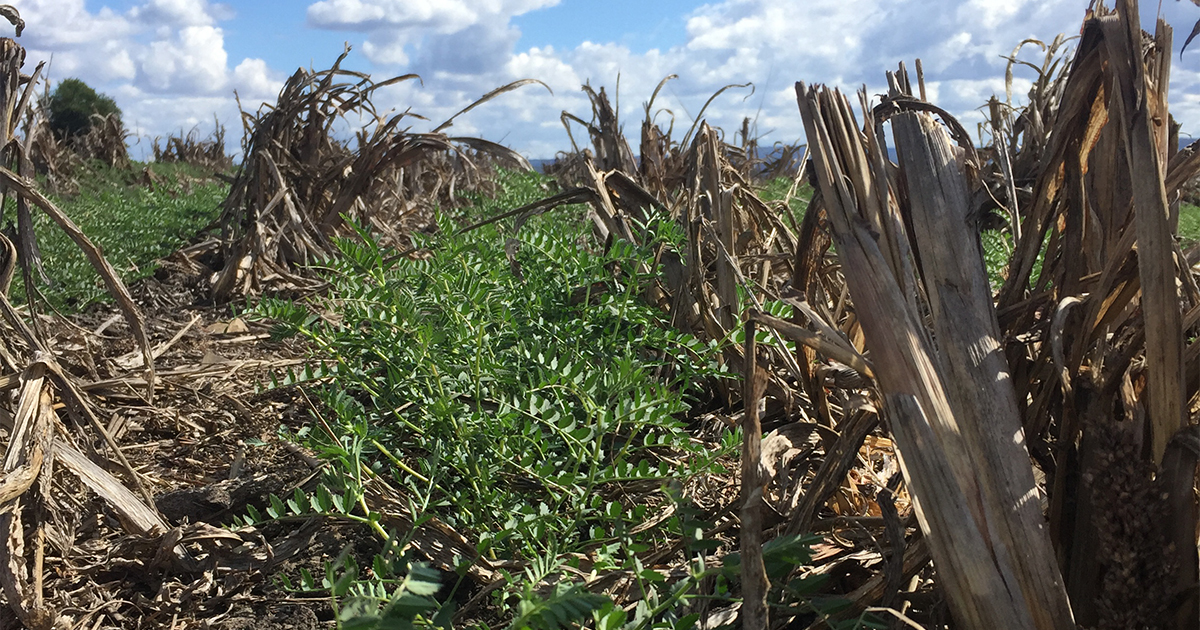
Week 8

Management notes:
- Crop progressing well. N-fixing nodules showing on roots.
- Expect to see flowers next week.
- No rain for week. Average min temps around 4 degrees C to tops of 25 degrees C.
- No insect, pests or weeds issues.
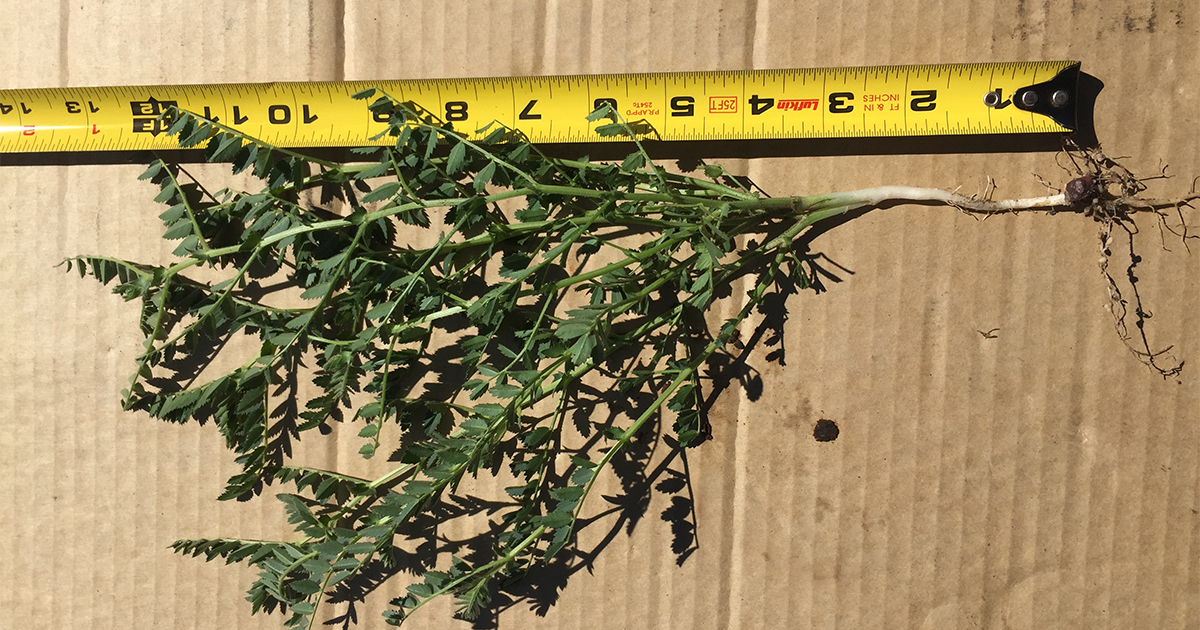 Healthy plant and establishing root system with active nodules.
Healthy plant and establishing root system with active nodules.
Week 9
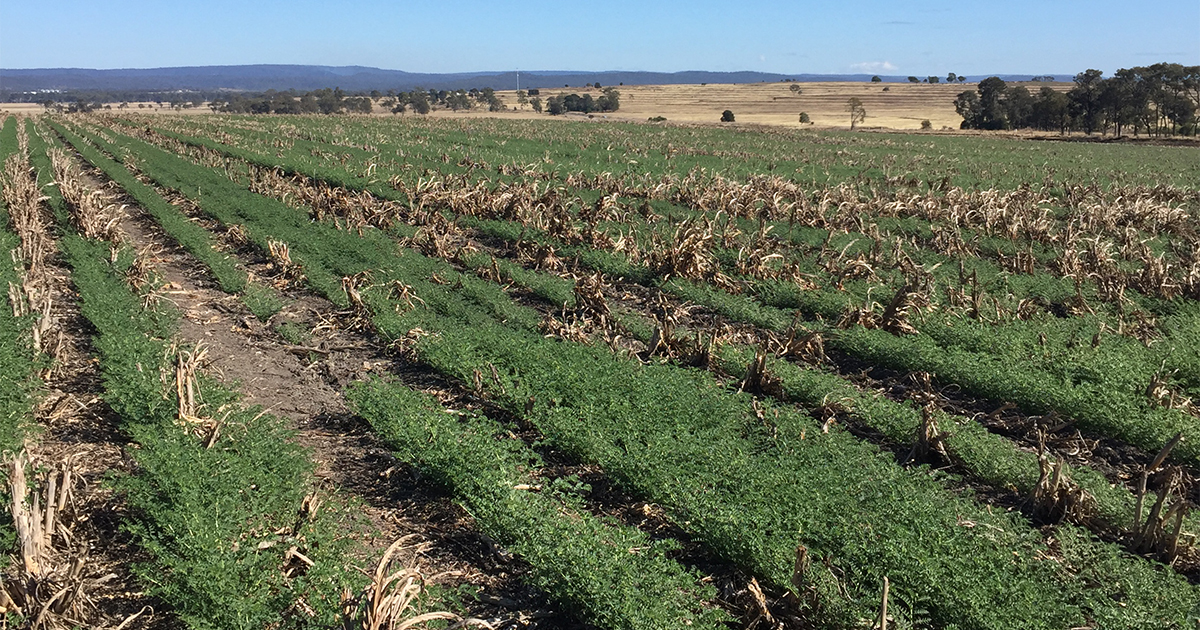
Management notes:
- Crop progressing and proving how tough chickpeas are in dry conditions. Just 2 mm rainfall recorded for the week, only rain since planting.
- First flowers have started to come out.
- No pest or weed issues yet.
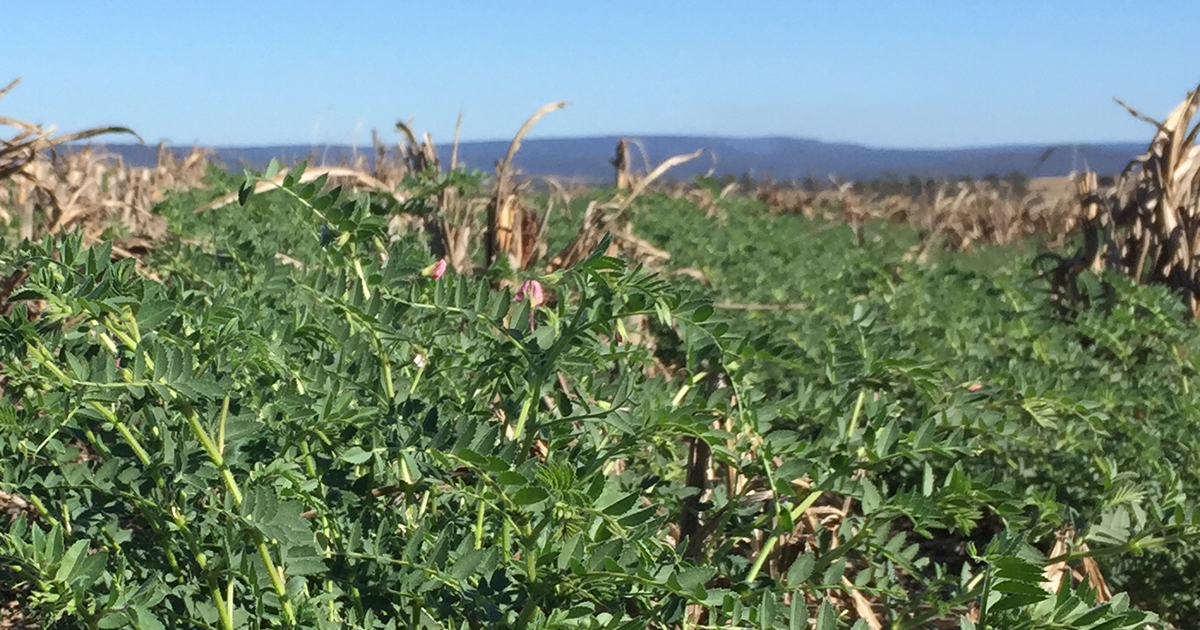 First flowers, time to ramp up pest monitoring.
First flowers, time to ramp up pest monitoring.
Week 10
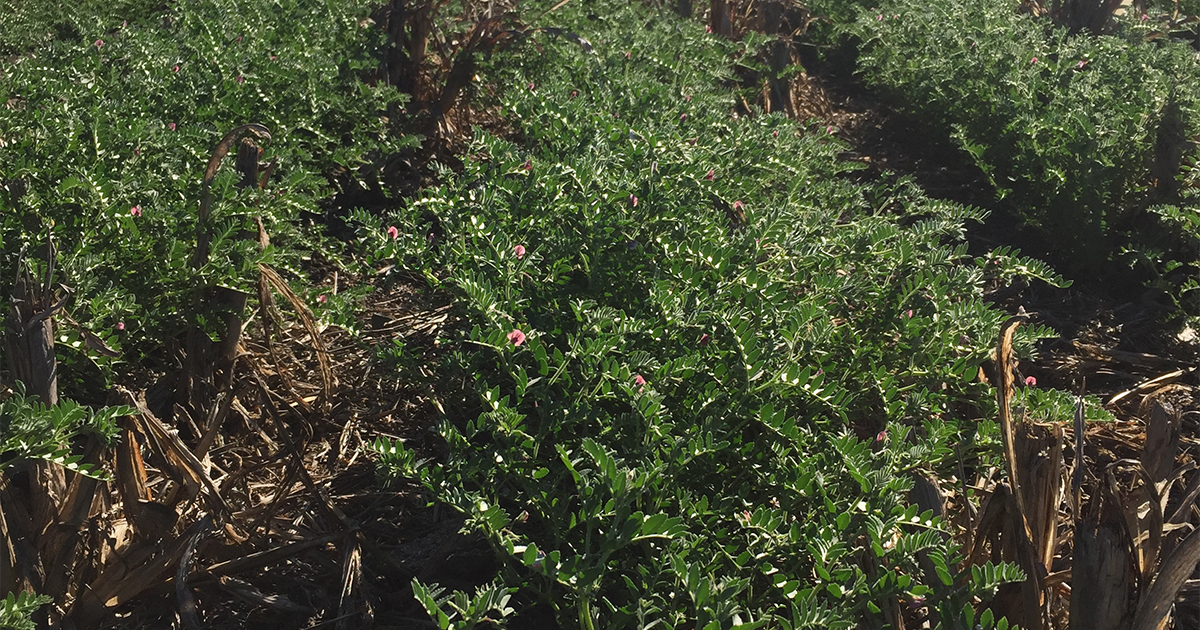 Management notes:
Management notes:
- Flowers now visible. Desi chickpeas have purple flowers while the larger kabuli chickpeas have white flowers.
- No insect or weed pressure.
- Frost early in the week will have an impact. Cold temperatures affect pollen development and pollination, which occurs before the flowers open. Fertilisation can fail and the flower often aborts.
- Still no in-crop rain since planting.
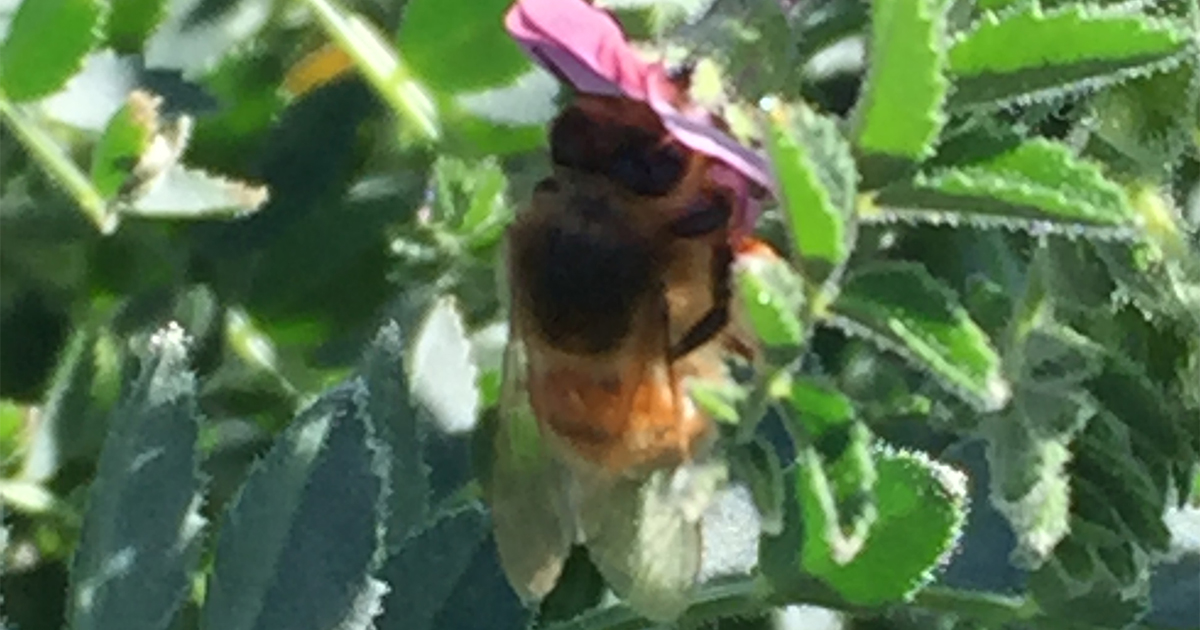 Chickpeas are primarily self-pollinated with pollination occuring before the flower bud opens.
Chickpeas are primarily self-pollinated with pollination occuring before the flower bud opens.
Week 11
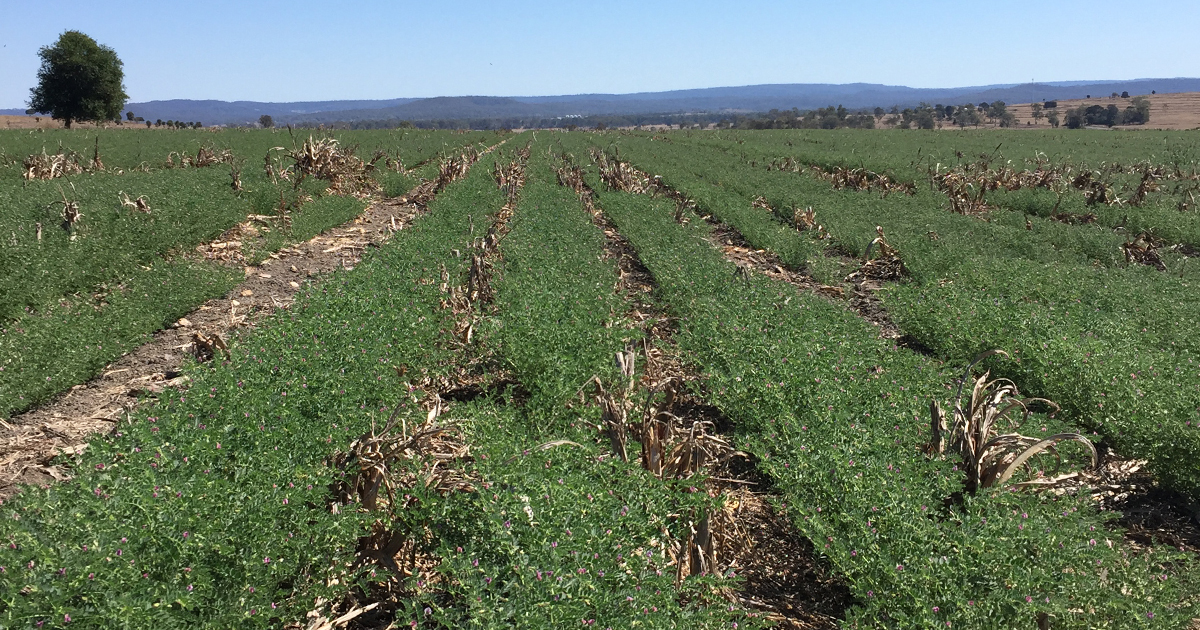 Management notes:
Management notes:
- Still no rain but the mornings are mild and the days warm.
- The number of flowers is increasing rapidly and some insect pressure is evident.
- Soon it will be necessary to make decisions on in-crop heliothis spray application. With no rain forecast Matthew will be weighing up whether a insect control will be worthwhile.
- The crop now stands as tall as the sorghum stubble it was planted into around, at around 300 mm.
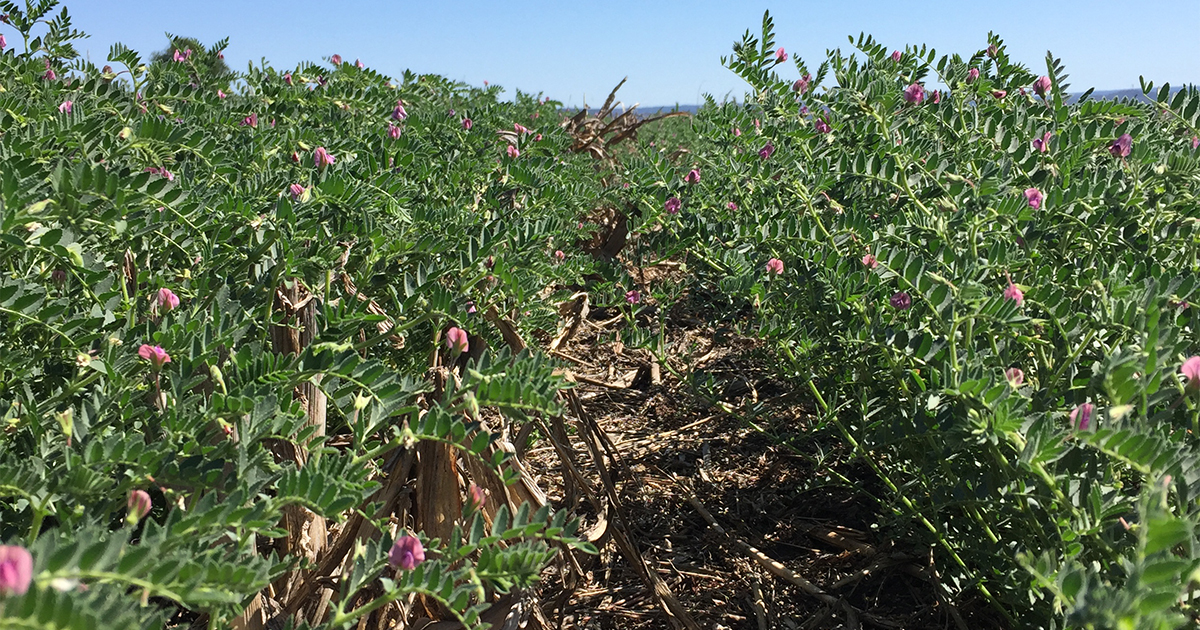 Masses of flowers present and the crop looks great but with no rain forcast there will be hard decisions to make regarding further crop inputs such as insect control.
Masses of flowers present and the crop looks great but with no rain forcast there will be hard decisions to make regarding further crop inputs such as insect control.
Week 12
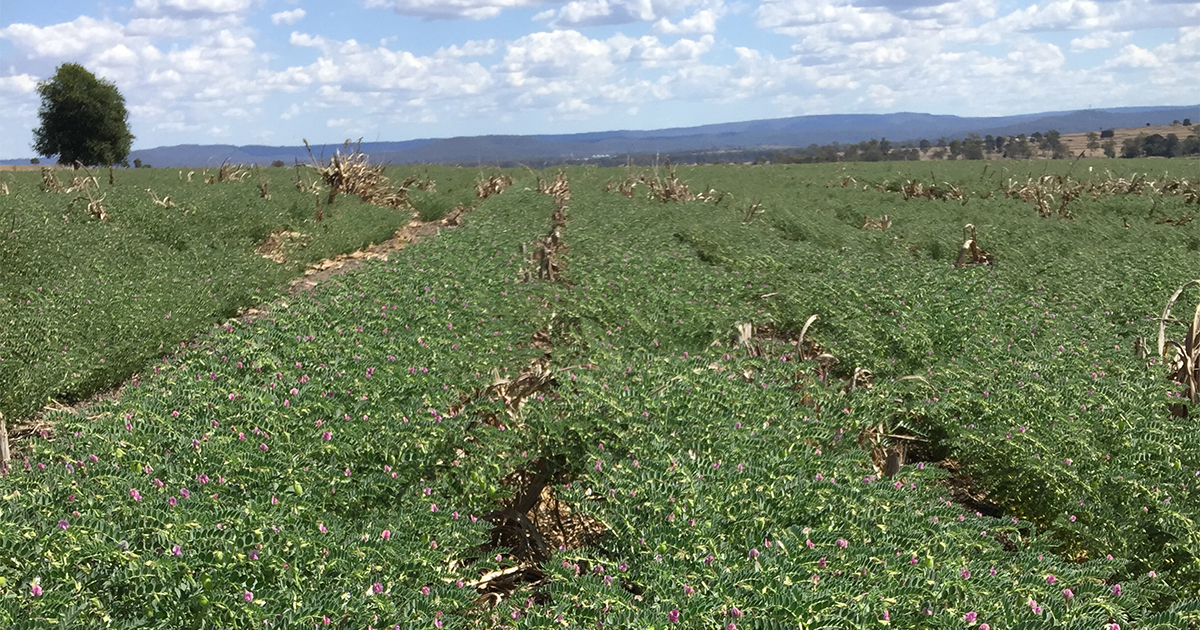 Management notes:
Management notes:
- The crop is producing masses of flowers and some pods have set.
- No real insect pressure.
- The plants have now spread out and filled up the rows.
- The crop has great potential, if only it could get some rain!
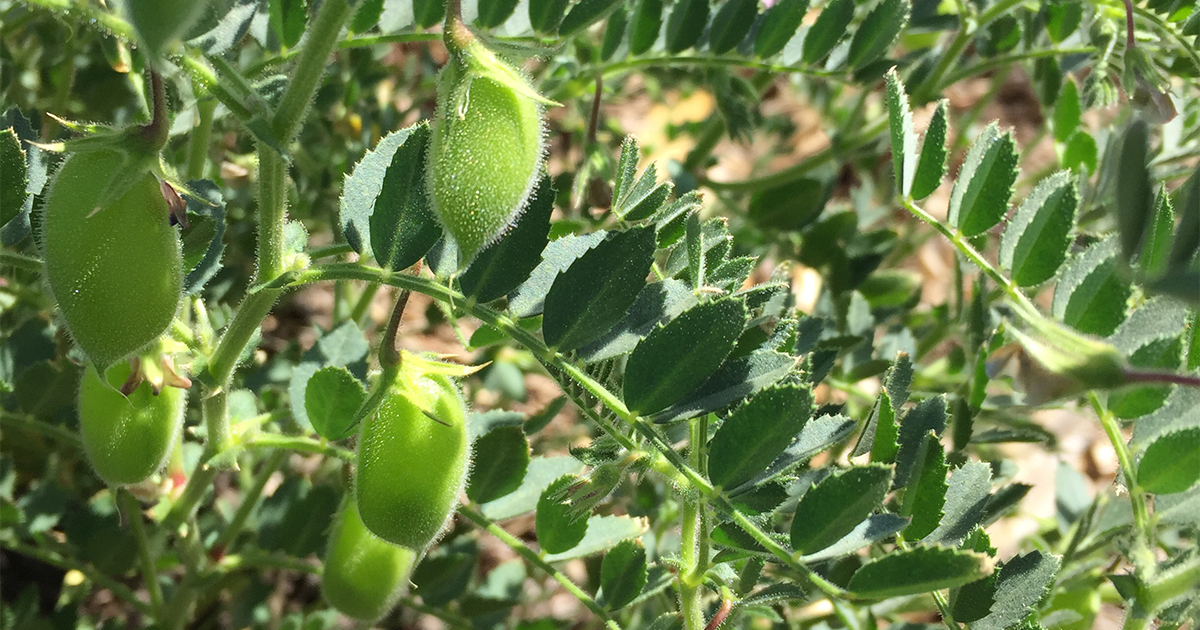 The first pods have set!
The first pods have set!
Week 13
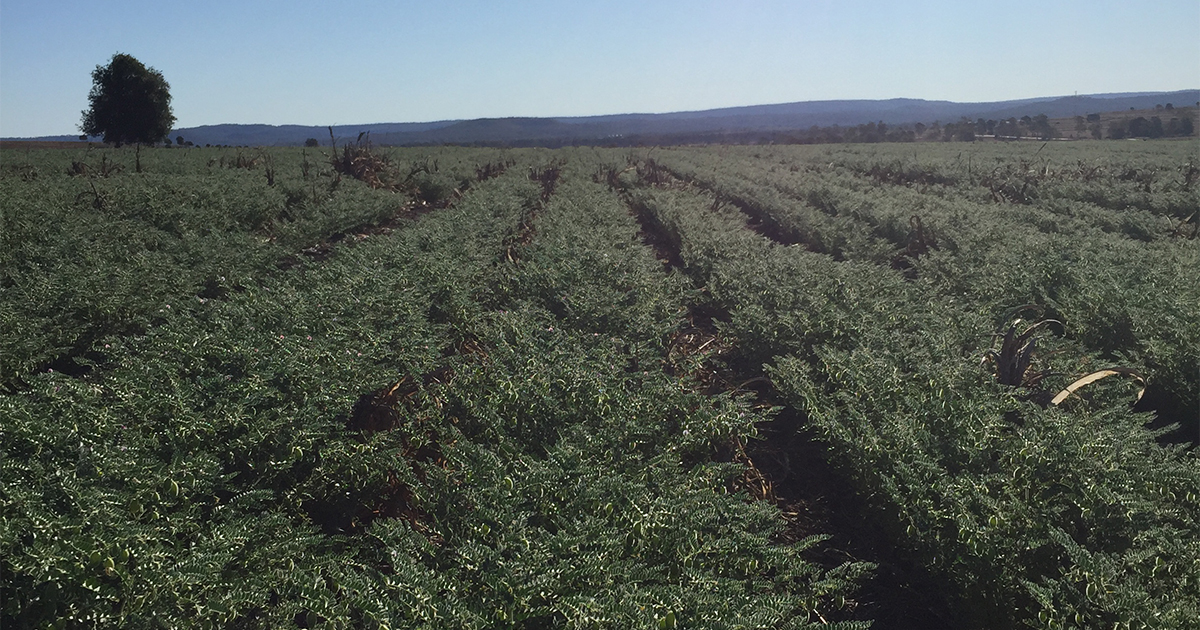 Management notes:
Management notes:
- There's still been no rain.
- No pest pressure evident.
- Above average temperatures are forecast for this week.
- Pods are filling and the crop is still flowering.
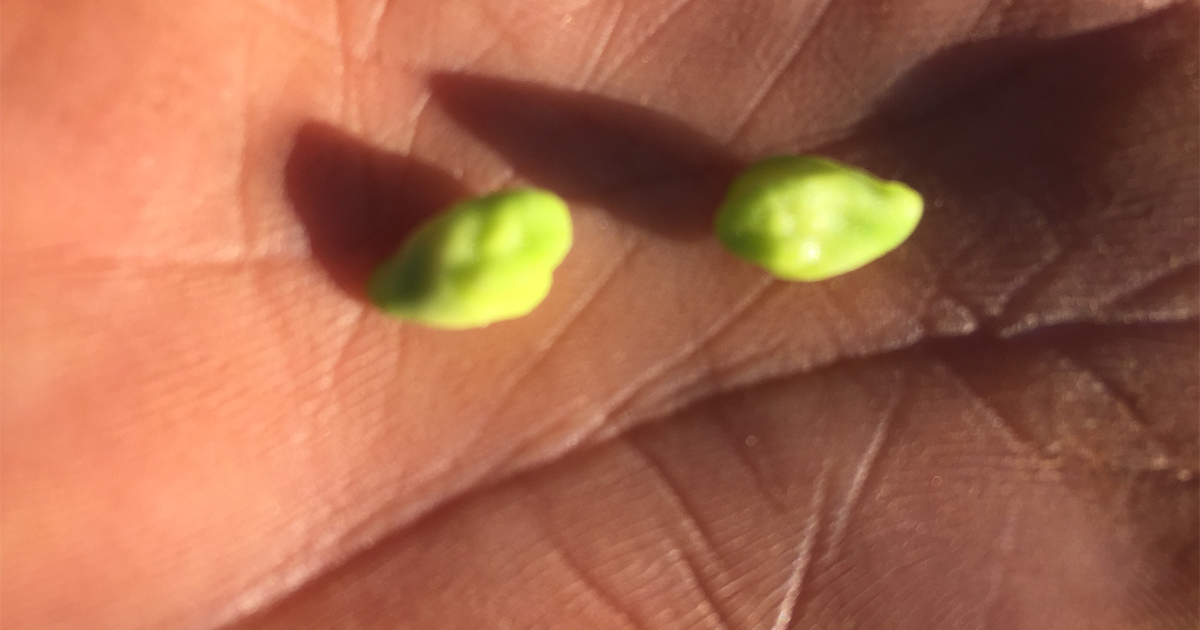 Immature chickpea grains.
Immature chickpea grains.
Week 14
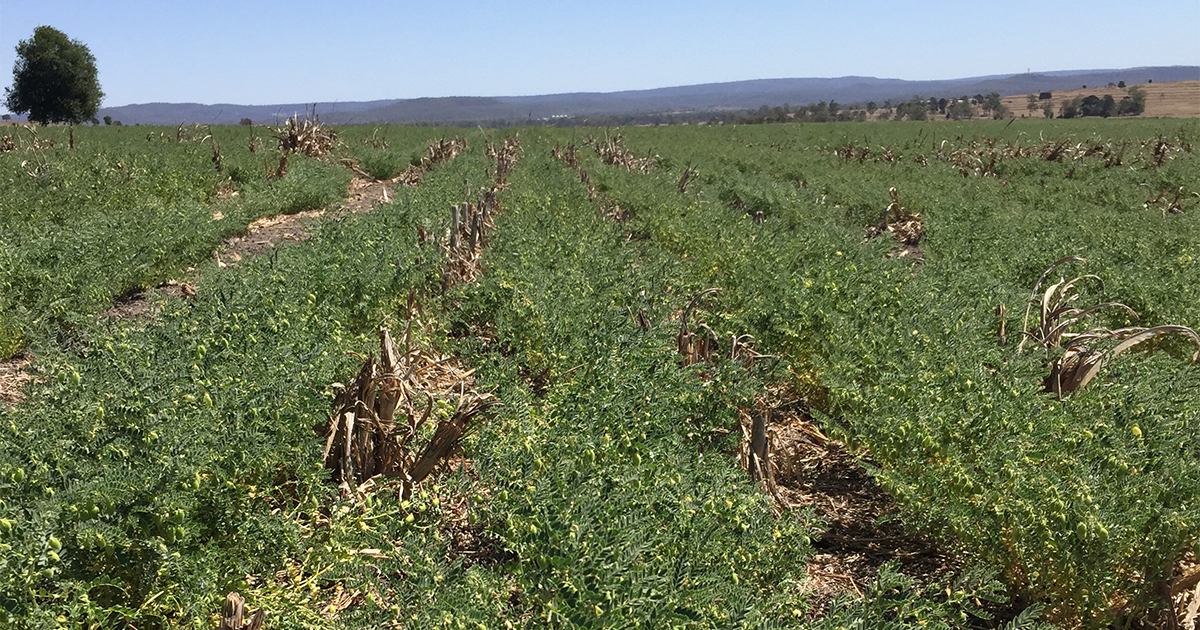
- Second week of spring and the crop is quickly maturing.
- Flowering has finished and the pods filling.
- Insect pressure has increased above acceptable threshold and an insect spray will be applied in coming days.
- Warm windy days should ensure a quick dry-down of the crop.
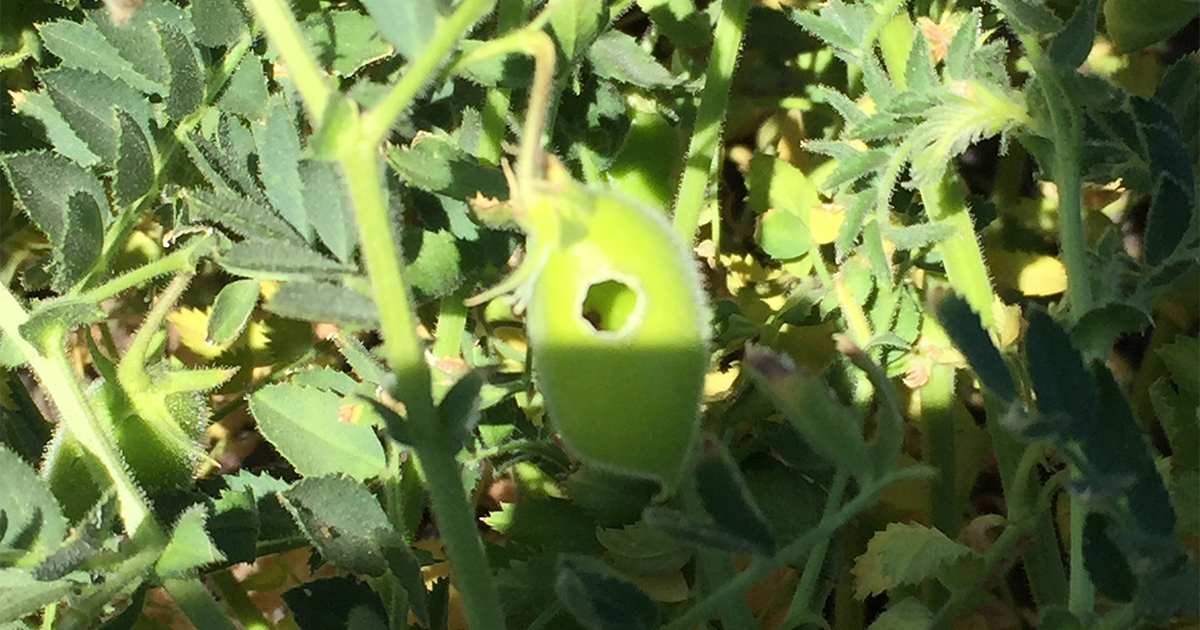 Insect pressure has been low this season but now it's time to control these chewing pests.
Insect pressure has been low this season but now it's time to control these chewing pests.
Week 15
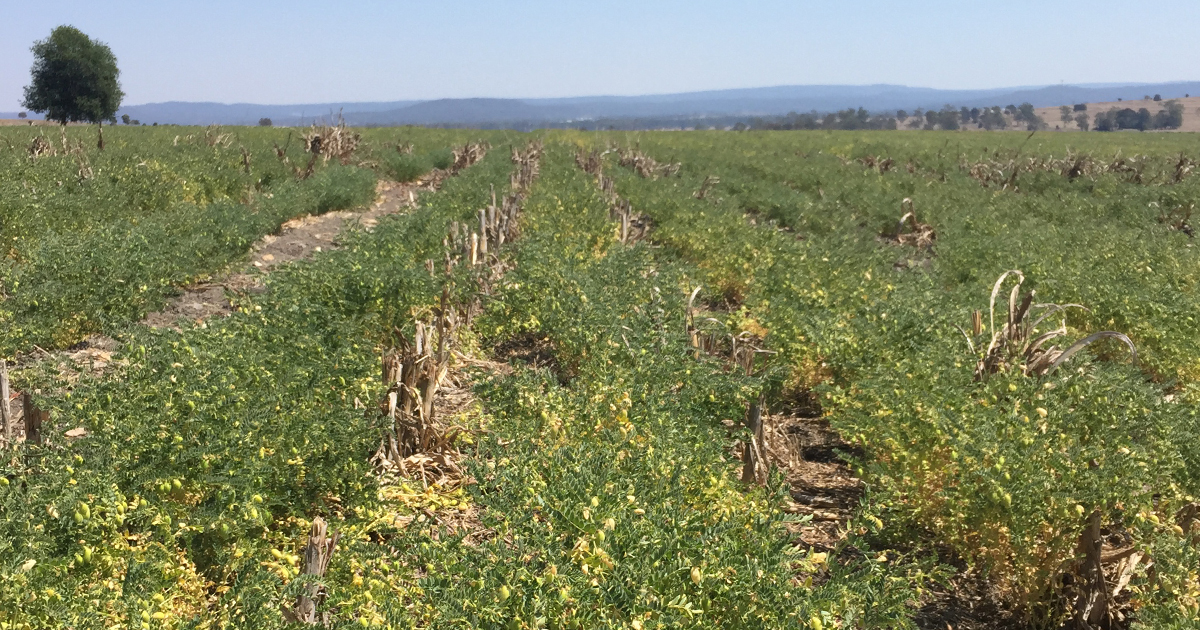
- Crop drying down now.
- Cool mornings then warm days – averages of high twenties down to low teens overnight.
- Crop was treated for heliothis last week with methomyl.
- Yellowing in crop indicates maturity and the fact that the crop is now running out of moisture.
- Some pods have set double seeds, but not all.
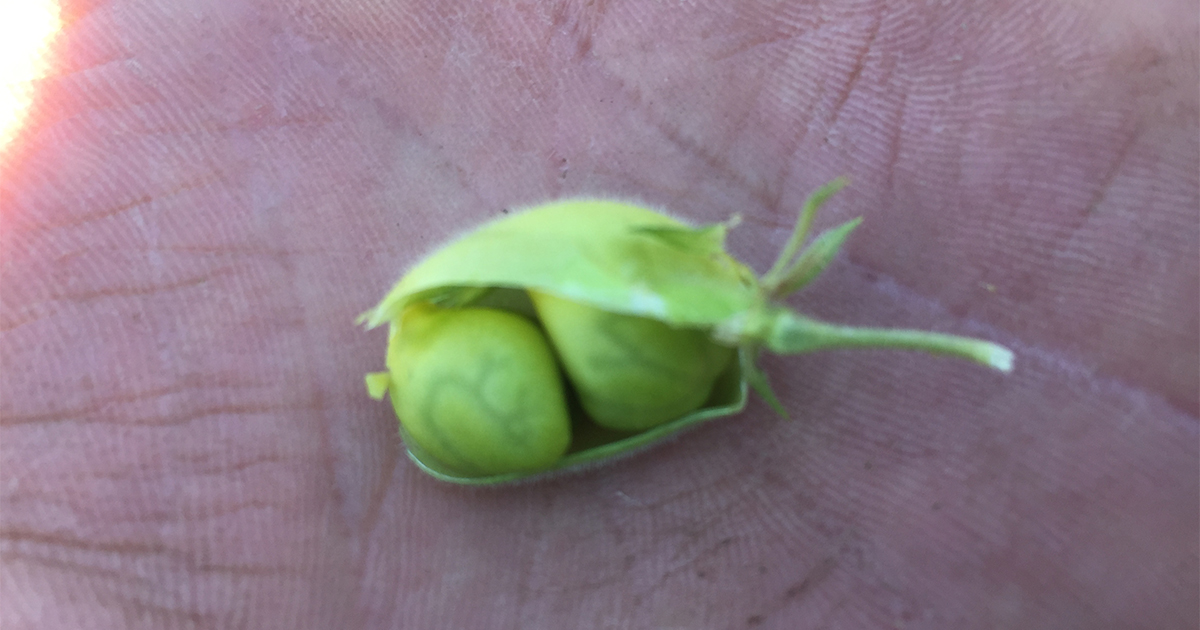 Seeds filling well as the crop starts to dry down.
Seeds filling well as the crop starts to dry down.
Week 16
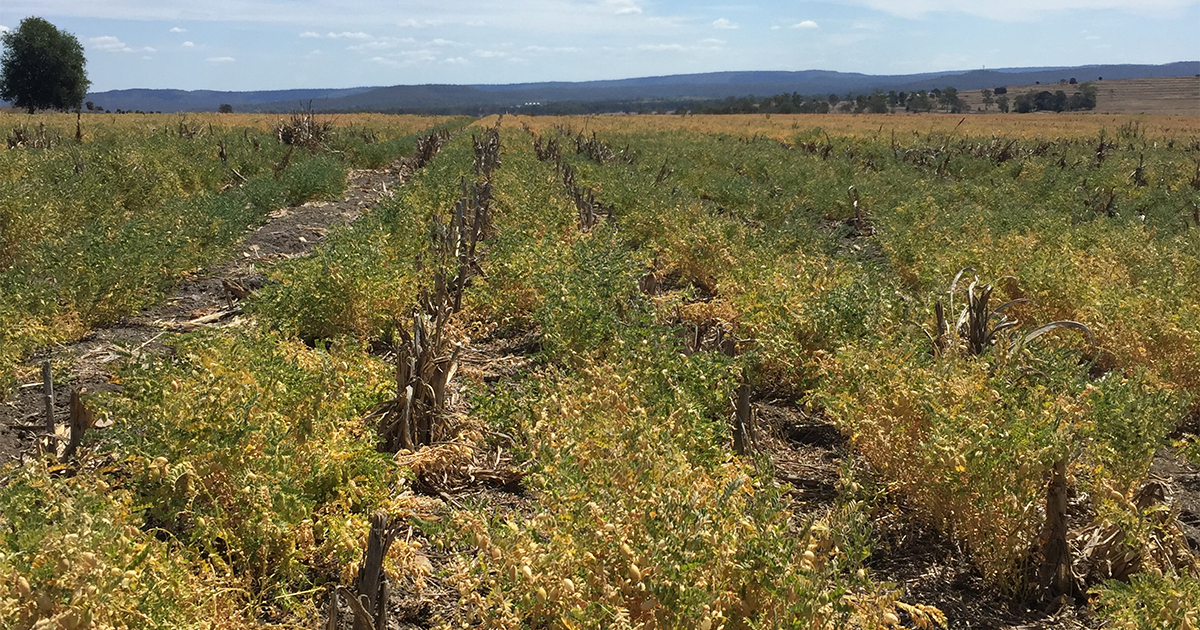
- The long dry weather continues.
- The crop is maturing quite rapidly.
- No insect pressure.
- Harvest will be challenging, with some of the crop been blown over from the windy days we had last week.
- At this stage Matthew does not plan to apply a pre-harvest desiccant.
Week 17
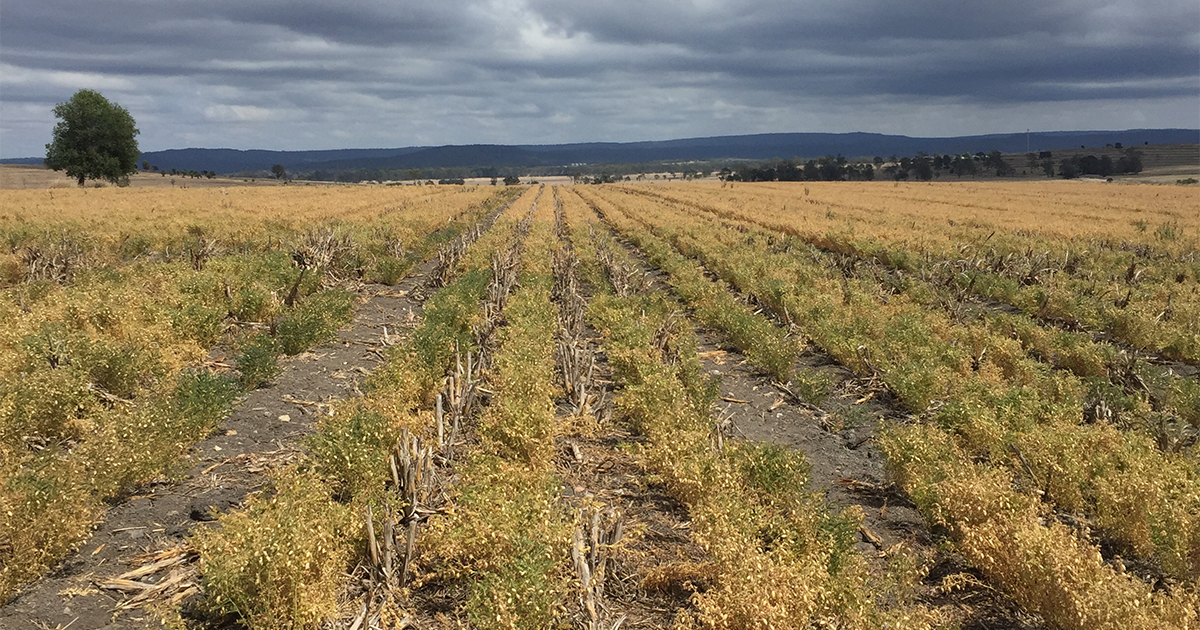
For the first time all season there are clouds and rain about in the north Burnett!
- The chickpeas are ripening quickly, with some areas still a bit green. Matthew has decided not to spray out.
- Last week the days were quite warm – around 30 degrees.
- No insect or weed pressure.
Week 18 to 20
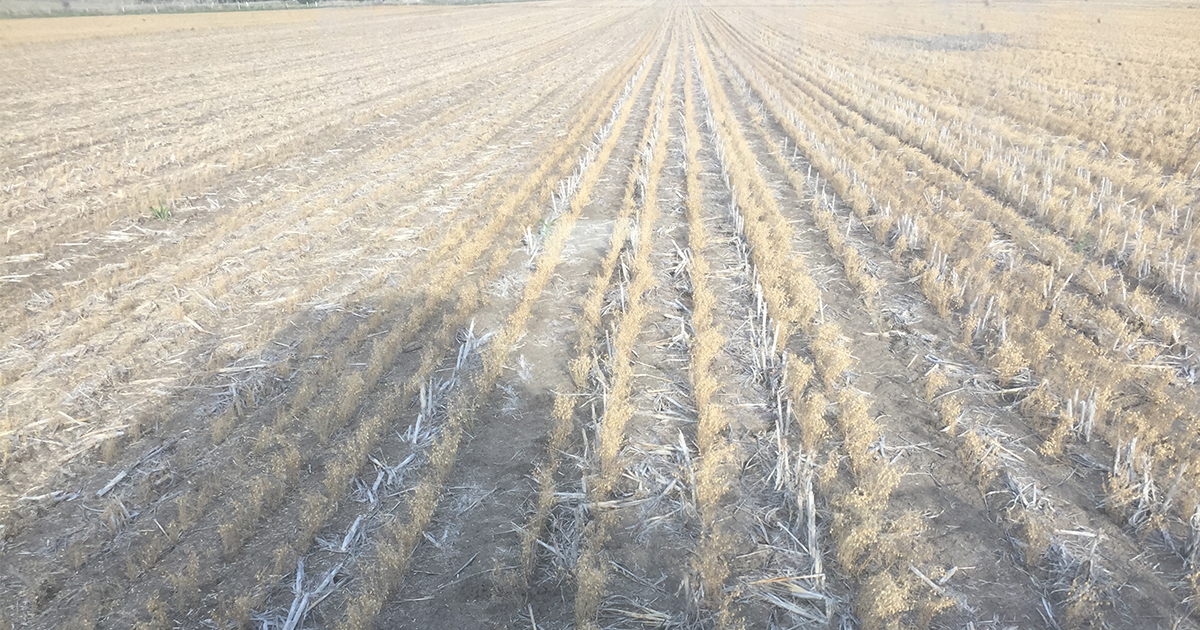
Management notes:
- This crop was harvested on 31 October.
- They weren’t sprayed out so dry-down has taken a while.
- The grain size is okay, with most pods having two seeds.
- Due to the very dry growing conditions the crop was low and challenging to harvest.
- Yield was around 530 kg/ha.
- Although the yield is at the lower end due to the dry, there were also minimal inputs to grow the crop. No pre-emergent herbicide was applied and just one spray applied for heliothis.
- Next year, Matthew plans to use rollers behind the seeder to level off the ground to make harvest easier.
Matthew is quite happy to get something off the crop, which was grown completely on stored moisture. Since December 2018 this field has grown a crop of sorghum yielding 2 t/ha and now chickpeas yielding 0.53 t/ha. Matthew is happy with ground cover left on field and plans to plant sorghum again in December if the soil profile is replenished.
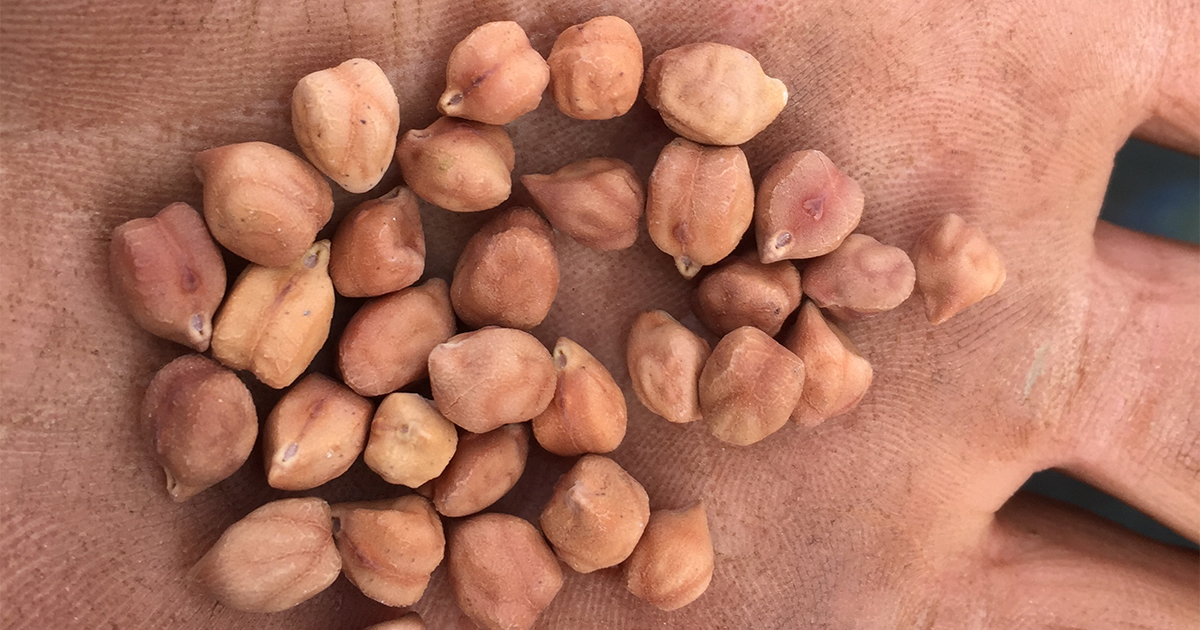
Read Pulse Check blog articles | Pulse Check Coastal facebook | Subscribe to the monthly newsletter

